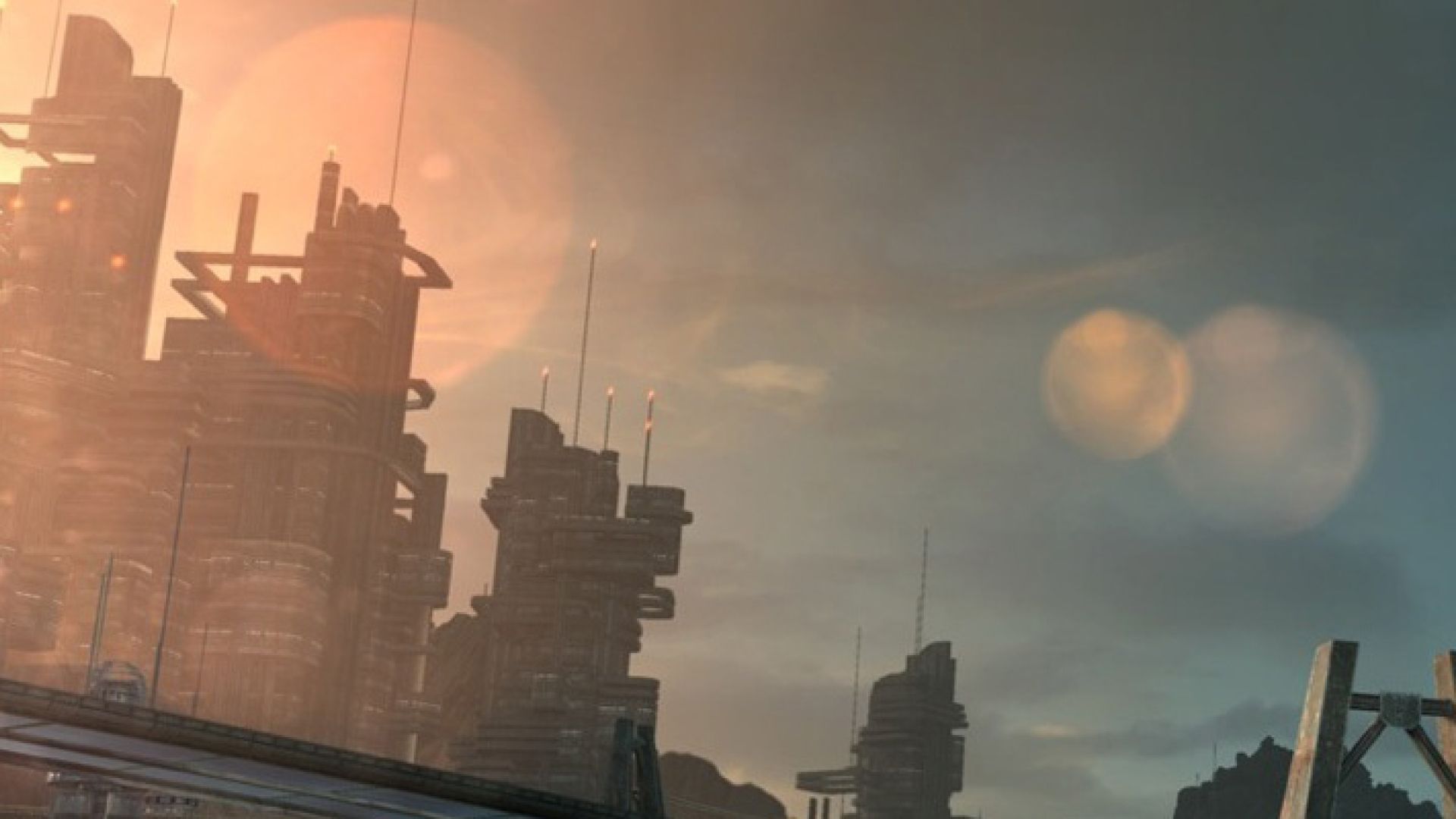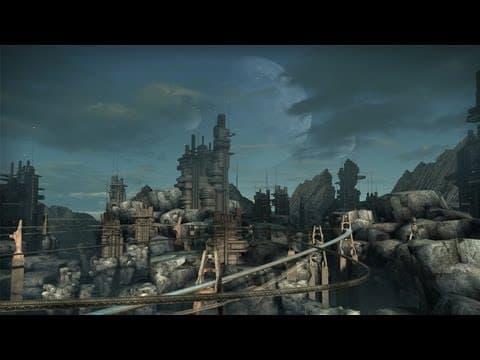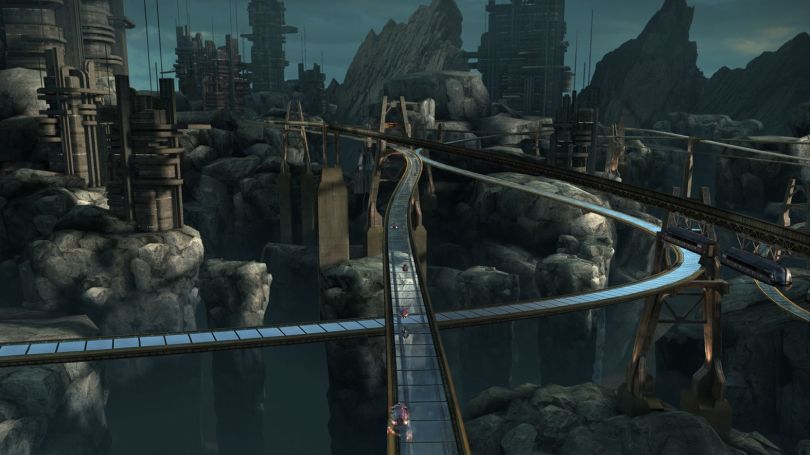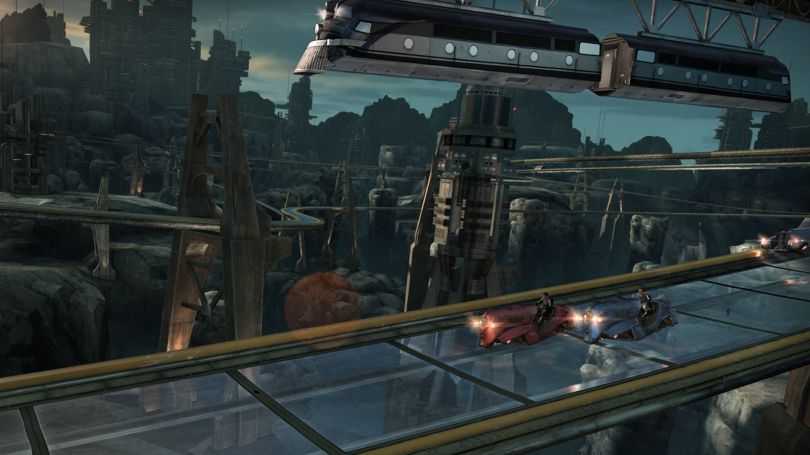
The Chase

Cómo lo hicimos
La persecución presenta un paisaje futurista que dos personajes recorren en motos aerodeslizadoras que desafían la gravedad. Su viaje desesperado y emocionante deja entrever una historia más profunda de conflicto y pasión.
He aquí cómo le dimos vida.

Personajes
Detalles extremos de los personajes
Como en todas las historias basadas en personajes, el diablo está en los detalles. Por eso creamos cada personaje con la friolera de 40.000 vértices. Se trata de una cantidad de polímeros extraordinariamente alta para los personajes, incluso para los estándares de las consolas de nueva generación y los juegos de PC. La cara y el cuerpo de cada personaje tienen varias texturas de 2048x2048 para el color de la piel, la reflectividad, los mapas de normales, etc.
Piel realista
¿Te has fijado en la piel de los personajes? Hemos conseguido un realismo excepcional aplicando sombreadores de piel de dispersión subsuperficial (SSS) que difuminan la iluminación entrante en el espacio de la pantalla, un proceso también conocido como difusión en el espacio de la pantalla. Tomamos mucho de lo que aprendimos en El efecto mariposa y lo optimizamos para las GPU de los móviles.
Texturas y sombreados
Modelo de sombreado basado en la física
Hemos tenido en cuenta la conservación de la energía y el efecto Fresnel al calcular la iluminación de objetos dinámicos y hemos utilizado la distribución de Beckmann para el componente especular tanto de la piel como de los metales.
Pintura metalizada
Para dar lustre a la pintura metalizada y otras superficies reflectantes de la moto aerodeslizadora, adaptamos el sistema de revestimiento para utilizarlo con materiales de baja difusión.
Floración local para la piel
En lugar de utilizar el postprocesado de pantalla completa para conseguir el bloom, hemos utilizado nuestro enfoque de difusión en el espacio de pantalla y hemos evaluado el bloom de los componentes difusos de la piel directamente en el sombreador de piel. Esto nos permitió conseguir el efecto deseado con un coste mínimo.

Iluminación
Aproximación lineal de la iluminación espacial
Prácticamente todos los juegos modernos de consola o PC incorporan corrección gamma, pero muchas GPU para móviles aún no admiten lecturas y escrituras automáticas con corrección gamma (sRGB). Para emular sRGB utilizamos gamma de 2, lo que nos permitió utilizar operaciones de cuadrado (multiplicación por sí mismo) y raíz cuadrada, que son mucho más rápidas que calcular la potencia de 2,2, por ejemplo. Sólo corregimos los píxeles de la piel y el tercer paso crucial del sombreado de la piel.

Dispersión atmosférica
Parte de nuestro objetivo con esta demostración era ilustrar lo impresionantes que pueden ser los fondos en las plataformas móviles. Para conseguirlo, decidimos apostar por un sistema de dispersión atmosférica adaptado a los móviles en lugar de utilizar simplemente una niebla de distancia tradicional. Simulamos la dispersión en el aire teniendo en cuenta el ángulo con respecto al sol y la distancia al objeto. Como resultado, The Chase puede ofrecer un entorno de visión excepcionalmente amplio y abierto, con el objeto visible más alejado de la cámara a cuatro kilómetros de distancia.

Nuevo sistema de destellos de lente
El uso de capas de bengalas nos permitió lograr una variedad de efectos como:
- Fenómenos anamórficos: cuando los destellos se desplazan en el eje horizontal o vertical debido a la forma anamórfica del objetivo.
- Sombreado interno: cuando la intensidad del destello se ve parcialmente atenuada debido a la oclusión interna de la montura de la cabeza o a la reflectancia desigual del objetivo.
- Fuga de luz: donde la geometría del destello se estira en el borde de la pantalla para simular una fuente de luz muy brillante fuera del encuadre.
Próximos pasos

Cómo sorprender
The Chase está ambientado en un futuro lejano e irreal, pero las técnicas utilizadas para crearlo están disponibles aquí y ahora. Si estás empezando como desarrollador para móviles y quieres aprender a aportar gráficos de gama alta a tu juego para móviles, nuestra Guía práctica de optimización para móviles es el lugar por donde empezar.

Reconocimiento del sector
Google utilizó The Chase en su keynote de revelación de Nexus7 / OpenGL ES 3.0, y fue ampliamente mostrado y admirado en los demo reels de SIGGRAPH 2013 de muchos de los principales expositores.